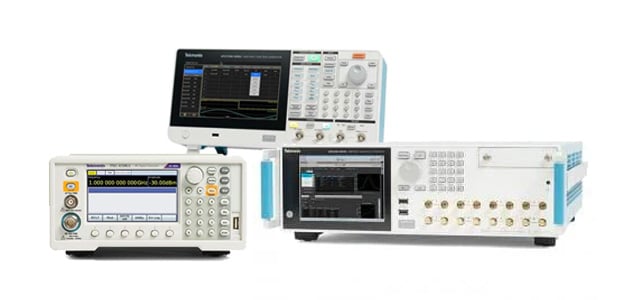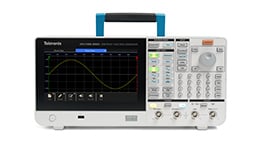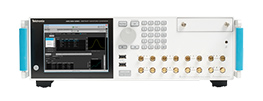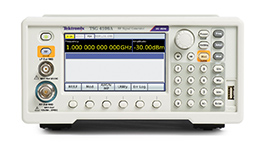
A signal generator is an analog or digital device that engineers use to create electronic signals when testing circuit designs. There are many different types of signal generators with diverse features and applications. Below are the most common types of signal generators and the unique capabilities of each.
Waveform or function generators
Waveform generators produce electrical waveforms over a wide range of signals. Outputs include sine wave, square wave, ramp or triangular wave, pulse wave, cardiac pattern wave, gaussian pulse waves, and arbitrary waves. The term function is used when the instrument is limited to common waveforms.
Arbitrary function generator

Like a function generator, an arbitrary function generator (AFG) has a preset list of waveforms or patterns that it can play. Unlike function generators, AFGs can also generate arbitrary waveforms. The operator can change the parameters of waveforms, such as how fast it is played, the amplitude and offset, or add some basic distortion or modulation.
The AFG is the prevailing signal generator architecture in the industry today. Typically, this instrument produces fewer waveform variations than more sophisticated versions called arbitrary “waveform” generators (see below), but it offers excellent stability and fast response to frequency changes. If the device under test (DUT) requires the classic sine and square waveforms and the test requires the ability to switch almost instantly between two frequencies, the AFG is the right tool. AFGs are also standard companions for the “double pulse test,” which is used often in power electronics.
Arbitrary waveform generator

An arbitrary waveform generator (AWG) is a more complex instrument that can produce almost any waveform you can imagine and offers a degree of versatility that few instruments can match. Fundamentally, an AWG is a sophisticated playback system that delivers waveforms based on stored digital data that describes the constantly changing voltage levels of an AC signal. For greater flexibility, many waveforms can be loaded as steps, and played out in a sequence involving repeats, jumps, and triggers to define the order and number of times each step is repeated. Using a combination of arbitrary waveforms and sequencing, extremely complex and dynamic waveform playback can be achieved.
AWGs are therefore used to produce custom compiled waveforms—rather than pre-set common waveforms. The AWG is used for applications ranging from optical modulation, quantum computing, automotive anti-lock brake system simulation to wireless network stress testing.
RF signal generator
When a digital signal generator is mostly used for wireless tests, an RF signal generator is typically the instrument of choice. RF signal generators are also typically used when the key specs are not the voltage range of the DAC capabilities but the frequency range it operates in, the frequency setting resolution, the maximum output power, and the phase noise. These instruments also typically provide normal analog modulation such as AM, FM, and PM.
RF vector signal generator

An RF vector signal generator specializes in creating RF signals with analog and digital modulation schemes in formats such as QAM, QPSK, FSK, BPSK, and OFDM. Vector signal generators are commonly used for receiver sensitivity testing. These generators typically can operate as arbitrary waveform generators for baseband signal generation or accept the AWG/AFG signals as inputs.
Tektronix offers industry-leading signal generators that cover a wide range of applications from replicating sensor signals to creating RF and the fastest high-speed serial data signals. Each signal generator can create a virtually unlimited number of signals—analog or digital, ideal or distorted, standard or custom.
Explore the full line of Tektronix signal generator instruments today.


